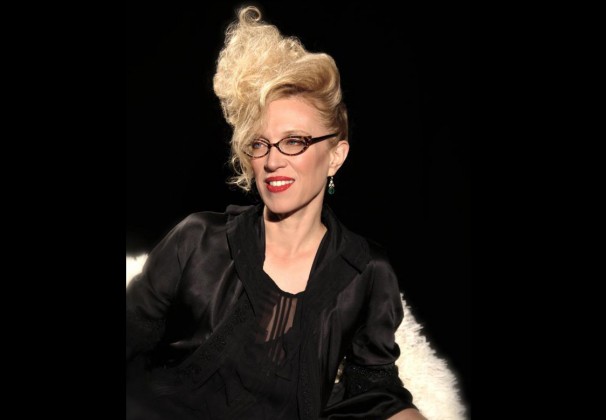
Dr. Valerie Steele, an author, fashion historian, curator and director of the Museum at the Fashion Institute of Technology, possesses the power to captivate a room while leading an intellectual discussion on a topic some may consider to be truly trivial — fashion.
While speaking to a packed auditorium at NYU’s Casa Italiana Zerilli-Marimò last Friday evening, Oct. 25, Steele remarked that it was this very assumption — the idea that fashion is simply a frivolous subject, devoid of any cultural or historical significance — that propelled her to achieve much of her success.
Steele, a slim, seemingly perpetually smiling blonde nicknamed “the Freud of fashion” by fashion writer Suzy Menkes, began by speaking about the tension between the spheres of academia and fashion. Steele first realized that fashion did, indeed, have a place in the academic world when she read articles in a scholarly journal on corsets while pursuing her graduate studies at Yale University.
“It was then I realized fashion was part of a cultural history, and that I could study fashion,” Steele said.
However, when she told a professor she would be writing her dissertation on fashion — not fascism, as he initially thought he overheard — he scoffed and walked away, leaving Steele to wonder if her initial assumption — that fashion really was important — was incorrect.
Because of this rejection, Steele realized that fashion was largely not respected by scholars because its historical and cultural importance were not emphasized nearly enough. This led Steele to launch Fashion Theory, a scholarly journal, in 1997.
Steele has carved out her niche at FIT, as she’s taught in the graduate school, expanded the school’s Museum, and curated over 20 exhibitions for the museum — most of which she refers to as, simply, “radical.” Additionally, Steele has authored numerous books, including “The Corset: A Cultural History,” “Paris Fashion” and “Gothic: Dark Glamour.”
The Museum at FIT — founded in 1969 and containing over 50,000 garments — is currently showcasing an especially timely exhibition, with the recent defeat of DOMA “A Queer History of Fashion: From the Closet to the Catwalk”. The timing was, according to Steele, purely a coincidence — although she did acknowledge the inextricable link between fashion and sexuality.
Additionally, Steele discussed the evolution of fashion in recent years and its greater acceptance in academia — in part, she said, because “more people are studying different aspects of fashion history.” The event was moderated by Eugenia Paulicelli, professor at the Graduate Center at the City University of New York, and Grazia d’Annunzio, special projects editor at Condé Nast. D’Annunzio described what she called the “Valerie Steele touch.”
“She approaches the subculture and historical and aesthetic periods and sees how they can be connected with current trends or recurring trends,” D’Annunzio said.
Julianne McShane is a contributing writer. Email her at [email protected].
























































































































































